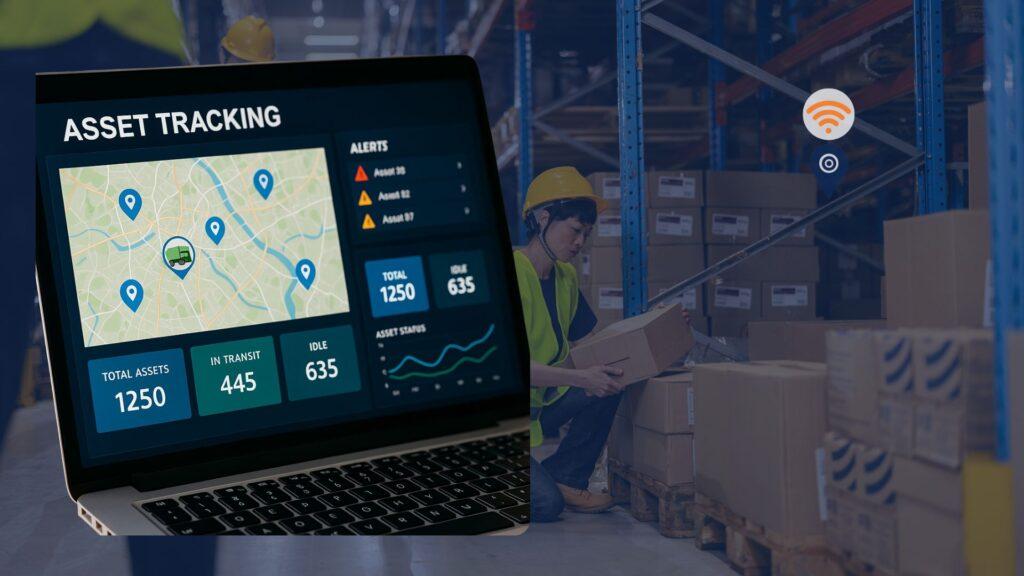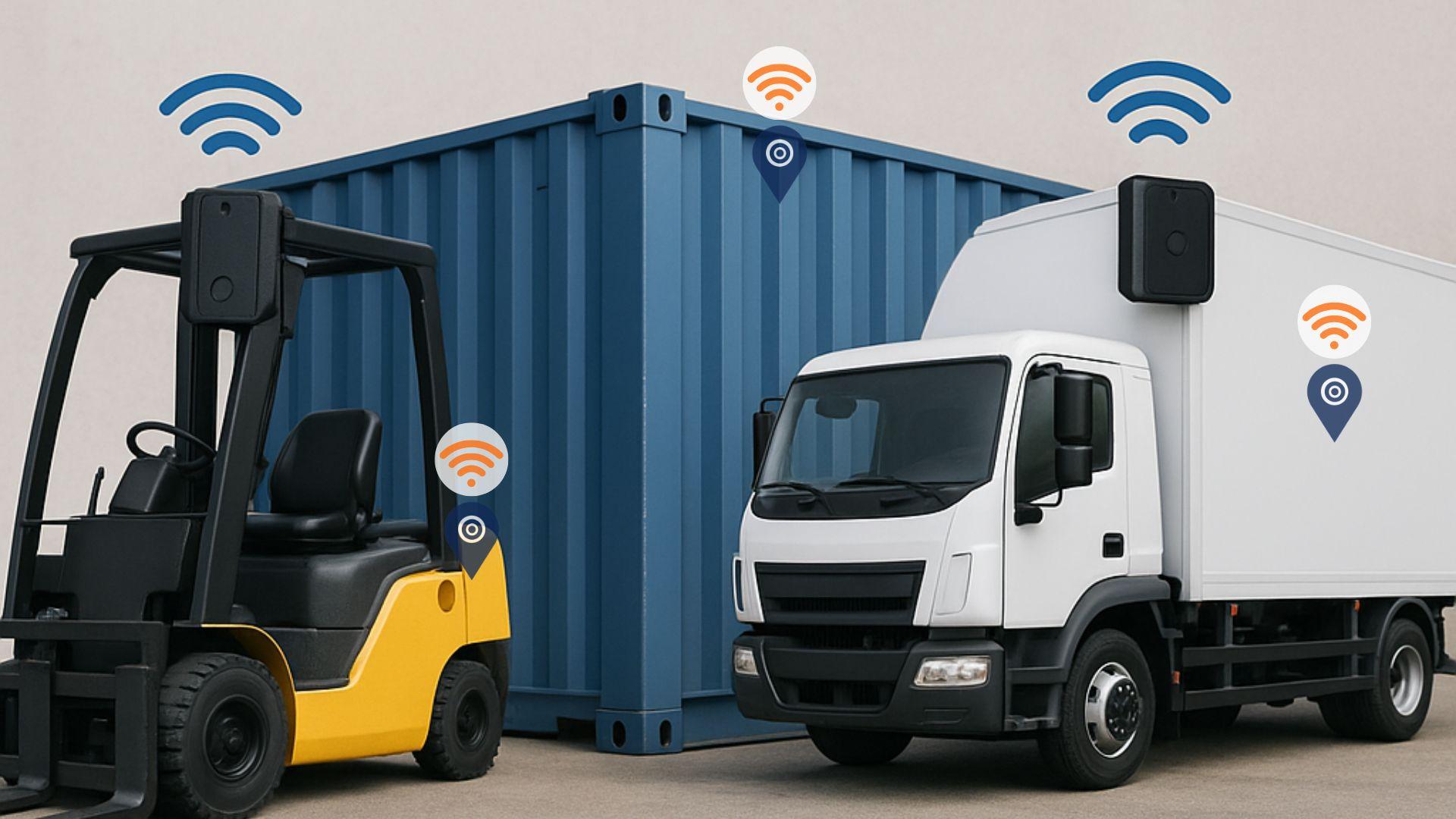Every warehouse has an employee responsible for finding missing pallets or tracking carts that never arrive at the right station. These workers often rely on clipboards filled with notes and corrections, trying to explain delays when materials cannot be located. While these efforts are common, they often highlight inefficiencies that grow unnoticed until output slows and customer demands remain unmet.
When raw materials or work-in-progress (WIP) carts vanish, production lines feel the impact immediately. Teams spend hours searching for items that should be visible within seconds. As time is lost, costs increase, lead times extend, and stress within operations rises. These disruptions may seem small in isolation, but across weeks or months, they reduce performance and affect profitability.
Why Manual asset Tracking Falls Short
Manual tracking methods served their purpose when warehousing was less complex. However, modern warehouses and factories manage high-volume movements, often running 24/7 across multiple shifts. Relying on checklists, barcode scans, or visual counts creates blind spots. A misplaced pallet can halt a production line. A delayed WIP cart can disrupt multiple processes downstream. Without accurate visibility, managers are left making assumptions instead of decisions based on facts.
This gap between manual tracking and operational reality is where digital technologies, such as RFID and IoT sensors, have transformed the process. Instead of waiting for someone to log item updates, real-time tracking devices automatically broadcast location data. This change shifts accountability from individuals to systems, ensuring materials remain accounted for without human error.
The Turning Point With Smart Asset Tracking
Companies adopting smart asset tracking solutions, such as AssetTracker IoT, have seen this transformation firsthand. Rather than spending hours firefighting, employees now move materials confidently from raw stock to finished goods. Real-time dashboards confirm asset locations, trigger alerts when items leave designated zones, and provide managers with accurate movement histories.
The transition eliminates the uncertainty associated with manual tools. Assets “announce” their locations using RFID tags and IoT-enabled sensors. Warehouse managers can view inventory levels instantly instead of relying on outdated notes. Alerts provide immediate feedback when a pallet or cart deviates from its route, preventing unnecessary downtime.
This shift from reaction to control produces measurable benefits:
• Operations gain real-time visibility over all tracked items.
• Downtime caused by lost or misplaced materials decreases.
• Teams save hours previously spent on searching tasks.
• Management gains reliable data to support audits, forecasting, and planning.
With automated accountability, employees focus less on locating items and more on managing productive workflows.
From Chaos to Controlled Flow With Smart Asset Tracking
The difference is most visible on the warehouse floor. What once felt like hide-and-seek now operates as a structured flow. Raw materials are received, tracked, and moved into production zones without guesswork. WIP carts transition seamlessly until the final goods stage. Each step is visible on a live dashboard, ensuring confirmation at every stage.
Workers benefit from less time wasted on manual searches and fewer frustrations tied to operational delays. Warehouse managers gain confidence in schedules, material availability, and personnel performance through improved visibility. At the leadership level, reliable data output builds trust in reporting, showing quantifiable improvements in efficiency, reduced costs, and stronger delivery commitments.
When integrated with software platforms such as those available at Asset Tracking Systems IoT, the results scale further. These solutions are designed to fit industrial-grade environments, offering flexible deployments across warehouses, factories, and logistics hubs. With features like RFID integration, IoT sensor compatibility, and customizable dashboards, the technology supports a wide range of use cases.

Why AssetTracker IoT Is Different
AssetTracker IoT is more than just a tag-and-track system. It provides actionable intelligence. Instead of adding complexity, it removes it by ensuring that every asset interaction is logged automatically. The platform provides:
- End-to-end material tracking from receiving to dispatch.
- Predictive visibility powered by IoT analytics.
- Configurable dashboards for supervisors, managers, and leadership teams.
- Alerts and notifications when assets deviate from defined workflows
This creates alignment across users at every level, preventing scheduling gaps and providing full awareness of inventory status.
Reducing Stress, Building Trust With Smart Asset Tracking
The cumulative effect of smart asset tracking adoption is cultural as well as operational. Warehouse employees are no longer held responsible for inefficiencies outside their control. Production teams no longer pause work to search for misplaced assets. Managers shift from investigating problems to driving improvements.
Trust grows as reliable data validates operational decisions. Stress fades as uncertainty is replaced with real-time control. Most importantly, customers benefit from shorter lead times, improved accuracy, and consistent on-time delivery.
Moving Forward With Smart Asset Tracking
If your warehouse or factory still relies on clipboards, manual notes, or visual checks, the costs of inefficiency are already present within your operations. The competitive landscape demands visibility and precision. Smart asset tracking is not an optional upgrade but a necessary foundation for scalable growth.
AssetTracker IoT and solutions from Asset Tracking Systems IoT offer the opportunity to replace lost time with real-time assurance. For organizations seeking to cut waste, improve accountability, and build resilience, this technology delivers the advantage.
Tracking materials should not feel like hide-and-seek. With IoT-powered asset tracking, warehouses move from chaos to control, supported by visibility, trust, and accuracy at every step.
